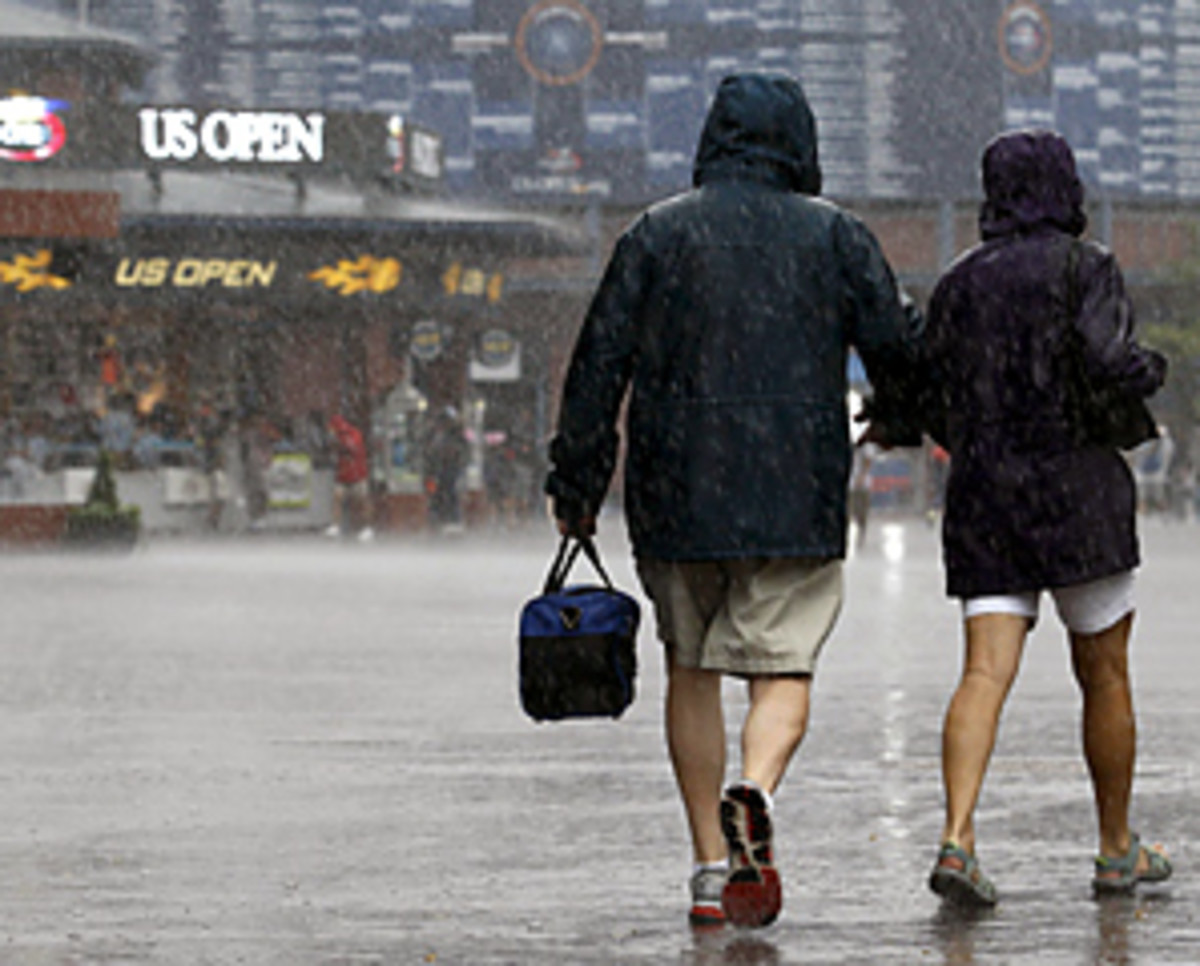
Super Saturday scheduling gaffes do nothing but harm U.S. Open
NEW YORK -- They snaked in from stage left, 30 men marching two at a time in jeans and shorts, buzz-cuts glistening under a bright sun as they filled a doubles alley to one side of Louis Armstrong Stadium. In the space between them ran a red ribbon, and they stretched it the width of the court until an American flag unfurled in full. They held it there for a moment, struggling in the swirling winds to keep it from bubbling up, and then gathered it into a ribbon again and walked off. If there had been a soul in one the stadium's 10,500 empty seats, he or she might have stood up and saluted.
That should have been tennis unfolding on Armstrong. Instead, the dry court went to a dry run, a rehearsal for a future presentation of the colors ceremony. It was the only banner moment for the USTA on a Saturday that was more soggy than super. The day began with a downpour that pushed the start of a three-match slate at Arthur Ashe Stadium back 90 minutes. When men's semifinalists Tomas Berdych and Andy Murray reached the court after noon, the clock was ticking. Only a small window of clear weather remained until another, more violent storm was to roll in at dinnertime. The hope was to complete that semi -- and then the one between David Ferrer and Novak Djokovic -- before tornado winds slammed it shut.
But that didn't happen. Murray took almost four hours to beat Berdych. Ferrer was about to serve for the first set when officials abruptly canceled play for the day because "rain was expected in the area in approximately 45 minutes," said the PA announcer, adding that the USTA had arrived at this decision "after consultation with the New York City Office of Emergency Management." Reactions in the crowd ranged from slight panic to sheer outrage.
Of course the show will go on. The second men's semi will be completed on Sunday and the women's final will follow. For the fifth straight year the men's final will be played on Monday and hope to wedge itself through another, much tighter window-the one between the network television profit centers of early daytime and primetime. And for the fifth straight year, we'll ask: why isn't the US Open a better-scheduled tournament?
Yes, Super Saturday is history now; the U.S. Open has committed to what tournament director David Brewer calls "a day of rest" between the semis and the finals, beginning next year. But the three-day, first-round format remains. The decision defies logic. Weather is a constant enemy, and with no roof in place, why not bank the time? It worked for Wimbledon-where the day of rest comes on the fortnight's middle Sunday-for more than a century before a roof was put over Centre Court to shelter play from the soggy London summer weather.
A simple tweak like could avert Saturday's endless -- and fruitless -- debate about whether to split the semis between Ashe and Armstrong. "There's no reason at all not to do that," said Mats Wilander, the tennis legend turned analyst. "We want a Sunday final. It doesn't make sense." Alas, there are greater, more influential forces at work. Broadcast rights holders are against it because of the strain it places on their resources. Players are against it because they want to play on the biggest show court. Paying fans are against it because they get shortchanged. Visions of 2008 -- when a fan stampede and tens of thousands of shutout ticketholders followed the last weather-induced split venue U.S. Open men's semifinal -- were still fresh in tournament organizers heads when the decision to confine all the matches to Ashe was made.
But nothing can fix the fundamental problem -- Ashe Stadium. How ironic that a man who did so much over the course of his life has his name attached to a stadium that is so one-track. Fifteen years ago, the USTA had the chance to build their dream stadium and went for size over sustainability. A slightly smaller show court wouldn't just have had a better chance of holding up a roof without sinking into the ground; its smaller capacity would make it easier to stage simultaneous matches at Armstrong without having to turn away fans.
They're the biggest losers in the end: The out-of-towner who builds a New York trip around Super Saturday, the townie with tickets to the men's final who has to work on Monday, the family who had planned their Sunday around tennis. Here was yet another chance for a niche sport to grab some fans between the start of football season. But Saturday, with yet another self-defeating blunder to its name, the U.S. Open gave everyone one more reason not to care about tennis.





